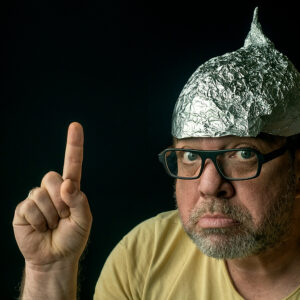The majority of Americans distrust the federal government. They don’t believe the government helps people or listens to them. It may be a surprise to learn that, with few exceptions, Americans have distrusted the government since the early 1970s.
According to Pew surveys, trust in government was astronomically high, at 70 percent, during the Dwight Eisenhower and John F. Kennedy years. It declined significantly to 25 percent through the Lyndon B. Johnson, Richard Nixon, Gerald Ford and Jimmy Carter administrations. The Ronald Reagan years saw an increase to 45 percent, matched temporarily when George H.W. Bush invaded Iraq.
The Bill Clinton years started low but exceeded Reagan’s by the end of his second term. Trust in government jumped under George W. Bush’s presidency following the 9/11 terrorist attack but precipitously declined to under 25 percent by the end of his presidency. It has hovered at that level through the presidencies of Barack Obama and Donald Trump and increased slightly under Joe Biden.
Some obvious conclusions can be drawn from this information. President Johnson’s support for the Vietnam War and Nixon’s Watergate catastrophe profoundly damaged Americans’ confidence in government. That damage partly recovered during the Reagan and Clinton years, along with brief spikes with military actions of the first and second Bush administrations. Excepting those rally-round-the-flag periods, the United States has not exceeded a 50 percent level of trust in government during the last 50 years. According to the Pew Survey, it has been consistently under 25 percent during the previous four administrations.
Distrust of government harms democracy. In 2016 the Economist’s Intelligence Unit report labeled the United States a “flawed democracy,” and, in 2021, it declared a further decline.
It’s essential to understand what we lose with distrust. Trust in government increases compliance with a wide range of public policies, including public health responses, such as vaccinations, adherence to taxes laws, political participation, social cohesiveness, and confidence in institutional legitimacy.
Distrust in the federal government did not start with the Trump administration. More likely, institutional distrust contributed to his election. Of course, anti-Trump advocates argue that he further enhanced distrust and division.
His campaign attacks on the media, FBI and Justice Department likely codified and deepened the feelings of distrust among his followers, 74 million of whom voted for him in the 2020 presidential election. Still, if Trump were to leave the political scene, it is unlikely that personal trust between citizens and trust in government would return to anything like that of the Eisenhower and Kennedy eras.
While not often in the headlines, distrust of government deserves attention, given its corrosive nature. It’s easy to imagine the benefits of increased trust but hard to imagine how to achieve it. It should be made a goal — like having clean air, safe highways and healthy food. There’s a need for “cleanliness” in our attitudes toward one another and our democracy. The president can create a bipartisan task force of congressional members from both sides of the aisle who understand that this lack of faith is damaging.
Distrust in government is a national issue. We may never achieve halcyon levels like those of Eisenhower and Kennedy days, but leaving it unattended at its current level is dangerous. There are actions we can take. Recognizing it as a severe threat is the first step.

